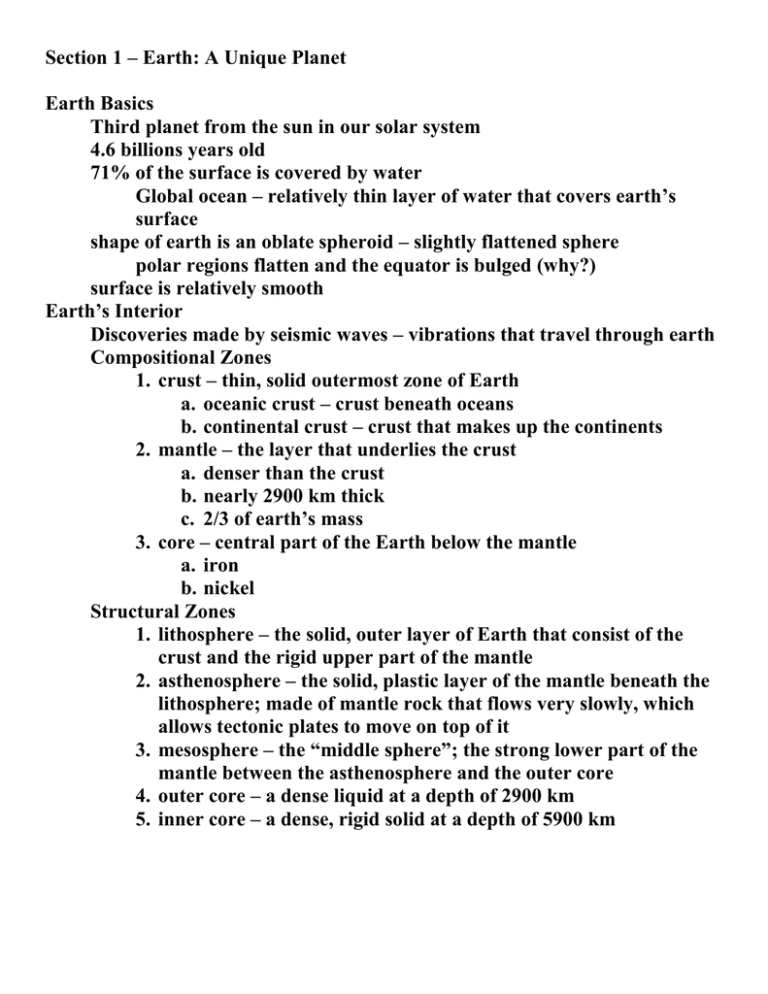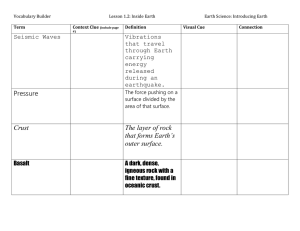Chapter 2 Section 1 Notes
advertisement

Section 1 – Earth: A Unique Planet Earth Basics Third planet from the sun in our solar system 4.6 billions years old 71% of the surface is covered by water Global ocean – relatively thin layer of water that covers earth’s surface shape of earth is an oblate spheroid – slightly flattened sphere polar regions flatten and the equator is bulged (why?) surface is relatively smooth Earth’s Interior Discoveries made by seismic waves – vibrations that travel through earth Compositional Zones 1. crust – thin, solid outermost zone of Earth a. oceanic crust – crust beneath oceans b. continental crust – crust that makes up the continents 2. mantle – the layer that underlies the crust a. denser than the crust b. nearly 2900 km thick c. 2/3 of earth’s mass 3. core – central part of the Earth below the mantle a. iron b. nickel Structural Zones 1. lithosphere – the solid, outer layer of Earth that consist of the crust and the rigid upper part of the mantle 2. asthenosphere – the solid, plastic layer of the mantle beneath the lithosphere; made of mantle rock that flows very slowly, which allows tectonic plates to move on top of it 3. mesosphere – the “middle sphere”; the strong lower part of the mantle between the asthenosphere and the outer core 4. outer core – a dense liquid at a depth of 2900 km 5. inner core – a dense, rigid solid at a depth of 5900 km Earth as a Magnet Two magnetic poles Extends beyond the atmosphere and affects a region of space called the magnetosphere - source may be the liquid iron core - may be produced by motions within the core that produces electric currents that in turn create Earth’s magnetic field - Sun and Moon also have magnetic fields Earth’s Gravity Gravity – the force of attraction that exists between all matter in the universe Law of Gravitation – the force of attraction between any two objects depends on the masses of the objects and distance between the two objects Weight and Mass Weight – a measure of the strength of the pull of gravity on an object. The Newton (N) is the SI unit used to measure weight. The mass of an object does not change regardless of location, but the weight of the object will change. Why? Weight and Location Weight varies according to the location on Earth’s surface. Weight at the equator would be about 0.3% less than the weight at the poles. Why?







